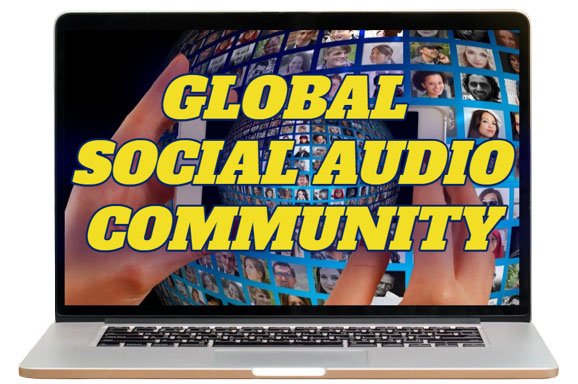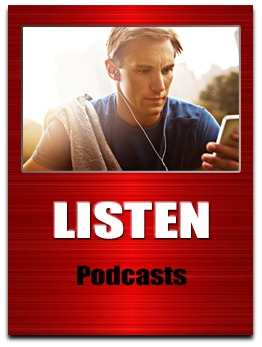TWITTER MAGIC 4 BLOGGERS
Recently I was interviewed on The Aussie Bloggers Podcast
We had a great chat about why I looooove Twitter and how it can help bloggers
Here are some of the highlights we talked about in the podcast
- How to break the Twitter barrier
- Reach millions of people in Twitter in one day
- The difference between reach and followers
- How to apply the 80/20 rule to your social media
- How to build up cyberkarma
- Learn the 4:1 rule or Keith’s own 10:1 version
- Hear the amazing ‘IKEA’ box story
- How to use Twitter as a JV tool
- Learn about Twitter 30/30
- Find out about Keith’s “Twitter Magic 123” system
- How many times a day you should check your Twitter feed
SOME ADDITIONAL INSPIRATION
“TWITTER WRITE” (Twitter Tips 4 Writers)
MORE FREE PODCASTS HERE!!
www.TinyURL.com/TwitterPodcasts
TWITTER MAGIC 4 BLOGGERS
((Full Transcript Available Below))
 Tanja Turner: Hi, I’m Tan from Write your Cancer.
Tanja Turner: Hi, I’m Tan from Write your Cancer.
Amanda Hoffmann: Hi, I’m Amanda from My Office Books.
T/A: …. and we’re from “Aussie Bloggers Podcast”
Tan: Today we have a really special guest, an absolute, total expert on Twitter. We’re talking to Keith Keller. How are you Keith?
Keith Keller: Hey, How’re you doing? A few Aussie’s on the same team. Isn’t that brilliant?
T/A: (both laugh)
Tan: That’s awesome.
Amanda: Well Keith, one thing I’ve noticed with bloggers, is, they all had a huge pain point. You know what it is? Twitter. None of them, all very rarely..there are some very clever bloggers out there that can use it, but the majority of bloggers really have no idea how to use Twitter. Now, since you’re so clever with Twitter, can you tell bloggers a little bit about yourself so they can understand where you’re coming from and what your experience is.
Keith: Yeah, so I’m in Melbourne, Australia and I work for myself. I live ten minutes from the beach and never go to the city. I don’t wear a suit anymore. I just hang out on skype and teach people all around the world, how to use Twitter for traffic, for buzz. It’s very very important that you understand what Twitter is.
Twitter is the first step of the marketing funnel. If you’ve written a book or a blog, or you’ve got an event, or you’ve got something you need to tell people and they’ve never heard of you, Twitter is this amazing way to say, ‘hey I’m here, and something amazing is happening, click this’. Right, once you understand that that’s what Twitter is, it’s this buzz builder.
Then if you get it right, you can reach millions..and I’m going to teach you how to do this. You can reach millions of people for free in one day. It’s very exciting.
Amanda: Now that is going to get some blogger’s attention for sure. The thought that, ‘who am I? I’m only just a little blogger’, or ‘I’m not really big on Twitter’, how am I going to achieve millions of reach, when I may only have a very small followship.
Keith: Yeah. Well the thing that’s very very important to realize is that, the number of followers you have is very very different to the amount of reach you have. This is a very key point that I teach. With Twitter, one of the challenges, and one of the frustrations and what I believe a trap is with Twitter, is that people think that they need to have the followers to get the traction. I have 39,500 followers. Cool, that’s a number.
…. but last week, 4 million people saw my Tweets, so it’s not about how many followers I had, it’s about how many people are in my tribe that say, ‘mate this is good, I’m going to share it with my tribe’. Forty thousand becomes 400 thousand, becomes 4 million. So you get all of these people re-tweeting your stuff to their tribe, and it adds another level because if I said, ‘you know what, this is an awesome article ‘cause I wrote it. Yeah, good on you Keith’. You’re a wanker. But, if my mate in Philadelphia says, ‘mate you’ve got to read this article, it’s bloody brilliant’, then there’s this quality that comes with that recommendation that I can’t give myself. Yeah?
Tan: Yeah. So, Keith how do you actually get that reach? I mean, is it to do with the actual, whatever your Tweet is? Is it to do with the content that you’re Tweeting? Is it who you’re actually targeting in your Tweets? Tell us a little more.
Keith: So, this all comes back to the 80/20 rule. And actually a book by Gary Vaynerchuck (@Gary Vee), called ‘Jab Jab Jab Right Hook’. What I call “Give Give Give Then Ask”. Only occasionally do I call in my favors and say, ‘Jimmy, you know what, I’ve Tweeted about your radio show a few times, would you mind…when you have time, tweeting about my book’? ‘Yeah ofcourse, no worries, you’ve tweeted about my radio show a hundred times. It’s no trouble for me to tweet about your book one time’. So you build up what I call cyber karma. So, I spend all day every day…and if you want to follow my feed, @KeithKeller, you’ll see what I’m doing. I all day everyday find great articles to share. Most of them are not mine. But I’m building up this enormous cyber karma by people saying, ‘Hey Keith, that was lovely. Just out of nowhere you’ve shared my article’. ‘Yep, ‘cause it’s a cool article’. And now we’re mates, and I got one in the bank.
Tan: So is that what you would suggest to bloggers out there? That…because a lot of bloggers actually…one of the things that they do is they blog about themselves every day or about a particular topic every day. So, you’re perhaps suggesting that maybe they should consider getting in some guest bloggers as well?
Keith: Well, there’s a couple of ways to do that. One is…this is a very key strategy, and I’ve had some challenging discussions with people about this. If you blog every day, you could do this in reverse. I personally recommend you tweet 4-1. Four times about someone else, one time about yourself. Now that’s heresy to most people because they think, ‘look mate, I’ve got so much material, I haven’t got the time to tweet about other people’. Okay, no worries, but why would they bother re-tweeting you if you haven’t helped them out? So that’s the first thing, 4-1. Tweet four times for everyone else, once about yourself. I personally do 10-1. I hardly ever talk about myself, but I tweet all the time for other people. That material could be found in two way. One is, you could get guest bloggers to blog on your site, which means you’re sort of bringing them back to your site, but it’s not your article. Or you could find a completely random article on someone else’s site…which again is heresy, ‘cause you’re supporting someone else. But in the blogger’s fear, or that what we call the Twitter verse, the power comes when you collaborate. That in itself is a mindset. If you collaborate with someone else and give them the power, when it’s your place in the sun, as I call it. You’ve got to speak in Girgarre, or you’ve just released a book, or there’s an event coming up, or you want to do something. They have no hesitation in helping you. Because you’ve already helped them out. This is so self-evident to some people, but it’s heresy for people that are self-absorbed. Does that make sense?
Amanda: It does make a lot of sense Keith, and it reminds me quite vividly of Jay Baer’s philosophy, where it’s all about, you give everything. Everything that you have, and the knowledge that you have, you give out and you share other people’s information. Because in the end it comes back. And I think, particularly if you come from a professional field, that is very foreign because you’re taught that your intellectual property is yours, you shouldn’t be handing it out. So I think that’s definitely a very good point you brought out, that we need to share, and people need to acknowledge.
Keith: Well, I want to aisle up Jay Baer, he’s like the coolest dude in the world, and your book you’re talking about is ‘You’, Y-O-Utility.com. Unbelievable book. I want to share a story he told about this book, about IKEA in Montreal. He said, in Montreal they have this really weird system where on the first of July every year, all the renters have to sign their lease or leave. It’s a sort of a strange system they have in Canada where everyone’s lease runs out at the same day every year. So there’s a whole lot of people changing houses on the same weekend. What a bizarre scenario.
Amanda: Very bizarre.
Keith: But now that I’ve set the scene, what IKEA did…this is unbelievable…what IKEA did was they put a dozen, a hundred dozen boxes on every street corner in Montreal on that weekend, with a little note that says, ‘These boxes are completely free and there’s 10% off the cafe
Amanda: Wow!!
Keith: So, and that’s it. There’s no strings attached. You don’t have to buy a couch, you don’t have to come into IKEA. But you’ll just know that when you’re moving houses, you’ve got ten boxes there. Take as many as you want, we’re refilling them all the time. And their sales went up something like 87% over the next year because the enormous cyber karma that came with saying, ‘Mate, I just got half a dozen boxes from IKEA and 10% off the caff and you know what, I just moved house, I need a couch. I mean, guess who I’m going to buy it from? Guess who I’m going to buy it from? So, it’s a great example of someone saying, ‘You know what, I’m thinking ahead. You need a couch one day…won’t need it today, but you need boxes today. So if I can provide those boxes for you today and a little incentive to come to the caff and have a coffee and maybe look for your couch then, then suddenly we’re best friends. There sales…as you can imagine, went through the roof just from being nice.
Tan: Word of mouth would of just played a huge role in that, as well as the big IKEA on the box(T/A laugh). But yeah, give, give, give, I agree.
Amanda: Now, the other thing I was going to ask you Keith is, you must have a heap of Twitter stories about successful Twitter stories. So, would you like to share one of your favourite with our listeners today?
Keith: My favourite Twitter story.
Amanda: I’m asking a lot here, I know. (chuckles)
Keith: No, no, it’s just, digging in to the pool. Well, one of the great advantages about Twitter which I believe, is it’s core message, is the power to connect with people that you can’t do anywhere else. Like on LinkedIn…we all know this…you have to know the person to connect with them. Which I think is actually pretty stupid. You know, I actually think that’s a failing.I think LinkedIn may have removed that function because it’s such a restriction. People say, ‘I only connect with people I actually know’. What’s the point of that? If you know me just ring me. Sent me an email, I already know who you are. You know, social media is for mainly people that you don’t yet know. Yeah?
Amanda: Yep
Keith: So, out of nowhere…this is a true story, the person that invented the cloud version of office 365, you know, microsoft office for the cloud, office 365, she follows me on Twitter and she tweets, DM’s me and says, ‘Keith, would you like to contribute a chapter for my new book?’.
Amanda: Wow.
Keith: ‘Oh, yeah yeah ok’. So we had a skype call and I did a…this is a true story…I skyped in, what I now call zooming in. I skyped in to the microsoft head office and taught microsoft employees how to use Twitter based on a DM from someone who randomly found me.
Tan: Wow.(chuckles).
Keith: And I think, that idea, that someone can randomly find you and say hello because they don’t yet know you. And this was the most amazing part of that story, separate to the fact that we’re going to write a book and that I skyped into head office, I said, ‘Yeah well it’s funny you say that…her name was Jennifer…’it’s funny you say that Jennifer ‘cause I know another Jennifer that works in microsoft and I think she works in your building’. Right, and I mentioned it to her, and I mentioned it to my friend Jennifer, and they didn’t know each other. In spite of the fact that they worked on the same floor, in the same building, in the same town, for the same company. And this random guy from Melbourne, Australia… I’m thousand’s of miles away…introduces two people that work in the same floor for the same company.
Amanda: Wow.(chuckles)
Keith: Who had coincidentally happened to have the same first name. And I’m thinking, that’s really what I’m talking about here, you know. If you can use Twitter as a networking tool, as a JV generator…’cause I love JV’s, Joint Ventures, I just love Joint Venture…and so I’m constantly scouring the planet for some cool people. I’ve got a piece of the puzzle, and luckily for me I’ve nutted it out and I’m good. I’m good at Twitter. Not very good at many other things, but I’m very very very good at Twitter. And so if people don’t know Twitter, and that it’s part of their puzzle that’s missing, all these people from all over the world are contacting me to say, ‘Can you contribute an article for my year book?’. ‘Can you come and speak at my conference’? You know, and I’m speaking in New Zealand soon, about this. You know, can you do this, can you do that? Because I’ve nailed my niche, and I’m very open. We connected randomly.
Amanda: We did, didn’t we?(laughs)
Keith: Now, this podcast in itself is proof of what Twitter can do. You know, probably four weeks ago we didn’t even know each other, and may not ever have met, but now randomly we connected and we stayed open, we became friends, and here we are on this podcast, talking about Twitter and IKEA and cafe’s and microsoft. And this is the actual part of Twitter I love. This is the stuff I don’t think you can do on any other platform. Because it’s real people talking in real time about real stuff, isn’t it?
Tan: It is. Sorry, that leads me quite effectively into the last point we’re going to talk about. What would you suggest would be effective strategies that the blogger could use to help extend their readership?
Keith: Ok. I coin this phrase Twitter 30/30. I believe…actually, my signature system is what I call Twitter magic 123. Follow first, follow back, follow up. Right there, a lot of people say, ‘Mate, I’m on Twitter. I’m the star. I’m a writer. I’m not going to follow other people. They’re supposed to follow me’. So, the ‘follow first’ scenario is, ‘It’s okay, you have never heard of me, I get that. There’s a lot of people in the world. There’s a lot of bloggers in the world. It’s quite possible that we have never come across each other. I’m going to follow first. I’m going to take the initiative’. So, number one, follow first. So, I recommend that you follow about thirty people a day, or every few days. It’s so easy to do, you just click, click, click while you’re waiting for your coffee at starbucks or sitting at the airport, in between games of candy crush. So, you know, Twitter 30/30. And you know, that means that you’re following about 900 people a month, and about four or five hundred of those will follow you back. They will, because if you pick your people right. And then you just start chatting, ‘Hey what are you doing? Can I share your stuff? Would you like to guest blog on my site? Are you in my town? Let’s have a coffee’. When you develop these real world friendships and you share for each other, this is where the magic happens. Now, I mentioned a figure. I want to show you exactly how this happens. I mentioned the figure 4 million. I’m nearly at…and I want to do it at this particular…I’m nearly at 40 thousand followers. I probably should get there at about the end of April. But my current Tweet reach is 4 million. That’s one hundred times more powerful then I could do on my own. The way I did that, is I’ve got a very very good friend in Philadelphia who has a radio show. One million listeners a week. We’re good mates, and we share each other’s stuff. We’ve just developed a friendship via Twitter, and we have this mutual respect for each other, so when his show comes out, I help him get the word out. When my new blog comes out, he helps me get the word out. He has 1.2 million followers. He doesn’t have to help me, I’ve got 40 thousand followers, but the fact is that we help each other. I’ve got a friend in London who has 1.8 million followers. I helped her with some gigs she did for rotary because she wasn’t absolutely sure on how to pitch it for that. So we did some gigs together for rotary. We are now good mates. She helps me out when I’ve got a project. I help her out when anything new comes on. And so this is reciprocity. So, you follow first, then you meet all these cool people. You follow back when cool people follow you that randomly…and they do…people randomly come across your site. I try to look at my site once a day to see who’s followed me that day, and can chat to them. Not everyone, but all the really cool people. You know, there might be a TV anchor in Houston or a blogger in Melbourne or a video maker in Istanbul. And you think well ok there’s some synergy here, ‘Would you like to guest blog for me? Can I help you out? What are you doing next? When you’re in Melbourne let’s have a coffee’. And the third one is this idea of following up. This idea that, ‘Ok, you’ve followed someone, they’ve followed you back. Let’s make something of that. Should I just simply re-tweet their stuff? Should i just simply re-tweet their blog? Should I offer them to guest blog on my site? Should I send them to you to be interviewed on your podcast?’ So this idea of service, this idea of looking out for each other, means that you engender this enormous community of people thinking, you know, ‘I can’t wait to help Keith out, because any time any of his proacts come out I’m just going to tell everyone ‘cause he’s such a good bloke. He’s just such a good person. In a way this is what social media is about. This idea that we’re all helping each other out. And we all have a niche or a tribe that may…your tribe may not yet have heard of me and that’s completely understandable. But now they will get to hear of me because we’re helping each other out. And that’s how it works.
Amanda: Excellent. Well that’s…I got to say there’s some gems in what you just said. It’s such a simple strategy to use and it’s one that I think all of us need to open our minds to, and do more often. And I can tell the audience right here and now, I’ve been watching you for quite some time and that’s why I approached you about Twitter. Because you do share alot of other people. You do have what you’re saying is a passion of yours, and you can see it in your Twitter bead. And if people were…if they want to learn how to do this correctly, all I can do is recommend you to go to Keith. To his Twitter account and watch what he does, because this is why I actually asked Keith to be one of our guests in this podcast. Because I’ll be honest, I’m very impressed with what you do Keith.
Keith: Wow. Thank you very much. I’m having trouble fitting into the room now.
T/A: (laughter).
Tan: Well Keith, I’d have to agree totally with Amanda in everything that she has said. You are just phenomenal and I could just listen to you all day. I’ve been furiously, scribbling out notes here, and have so much information. Can you tell our listeners, how they can reach you? Where they can find out more about Twitter Magic 123?
Keith: Well, the first thing I want to suggest, and based on this whole mechanism that I’ve just talked about, is that I have a free ebook. Its @KeithKeller.com.au.
(I before E except after K) … soooo many people spell my name wrong. Completely free ebook, which is really just a workbook, because I’m a podcaster, I’m a talker, I’m not a writer. So I have a ten part podcast series. It basically…everything we’ve talked about today, I’ve actually put into ten minute sections that you could just listen to once a day when you’re making a coffee or when you’re mowing the lawn, or doing the vacuuming or picking the kids up. You know, I like doing things in little chunks. It’s because that makes it doable. So, the book is called ‘Crack the Twitter Code’. It’s available free on my website, completely free. If you do want to know more, I do offer coaching on skype @twittermagic123.com. That’s my Twitter magic system. And I’m very very pleased to say that from time to time I’m going to be zooming in at various locations around the world. I’m doing a lot of skyping gigs, what I learned now they’re calling zooming gigs ‘cause there’s a great site called ‘Zoom’. So, my new project is that I’m now doing a lot of speaking gigs via the internet. You can find out more @cheersfromdownunder, thehashtagcheersfromdownunder, and it’s a perfect segway, ‘cause next time I come back, we’re going to talk more about hashtags and what that actually means. (laughter from T/A). I’m setting up the sequel.(all laugh).
Amanda: We’re booking you in now Keith.(more laughter) So, Keith it’s been absolutely wonderful talking to you, and we’ve thoroughly enjoyed it, and you are such a wealth of knowledge around Twitter and social media and we thank you so much for coming on our show. And just in conclusion, I’d like to thank our sponsors. And our sponsors are Amanda from My Office Books, where I will complete and help you with your virtual crowd journey when it comes to making book keeping fun, easy and online, and very flexible for you to use anywhere and at any time. ….. and Tan?
Tan: Tan from Write Your Cancer, where I help you write your cancer story and share it with the world. So thanks again everybody for listening and tune in for when this is going to be going live, because Keith has got some fantastic gems. Bye for now. Bye.

TWITTER MAGIC 4 BLOGGERS
((Full Transcript Available Below)) 























